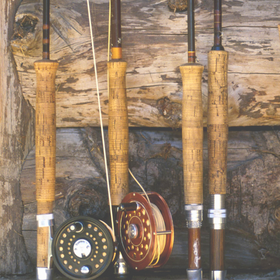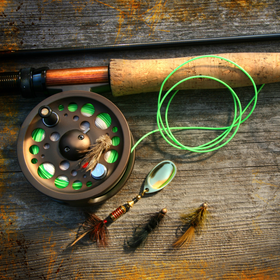All About Beadheads
One of the major innovations in fly fishing in the last few decades, has been that of the Beadhead Nymph. Many beginning fly anglers are surprised to learn that many of us can remember fly fishing when there was no such thing as a Beadhead Hare's Ear, we had to be satisfied using a plain old Hare's Ear, gold ribbed if you were lucky. In fact in many types of conditions I still prefer the basic nymph to that of the beadhead variety.
The bead headed nymph was first used by an Austrian fly fisherman named Roman Moser. He used them for grayling and called the innovation "Gold Heads." They first came to the US in the early 1980's carried in fly boxes by European anglers. Their popularity first caught on in the great fly fishing state of Montana. And soon thereafter they caught on nationwide, and then worldwide.
Because they proved to be effective for catching fish, fly anglers need to know why they worked. It is that need to know that seems stronger in fly fishers then in other forms of fishing. Of course since fish do not talk, nobody knows for sure, why, but there are several popular theories abound.
One is they add critical flash. Flash has always been incorporated into nymphs. The Gold Rib Hare's Ear, has flash in its very name. Pheasant Tail, Prince Nymphs, and Zug Bugs to name a few all contain flash. Many real nymphs have hard bodies that reflect light in all directions, and so perhaps the bead mimics that aspect of a nymph's appearance in a way that soft materials just can't.
Another popular theory is that the bead mimics the air bubble many nymphs release as they make their final ascent during the emerging phase. Emergers have really caught on in popularity as the nymph is extremely vulnerable in this phase. Nymphs move in a fury of activity and they are likely to give off all sorts of clues that fish hone in on as part of their instinctual feeding mechanism, and the bead just adds to this aura of a nymph. And because they are getting ready for mating, fish find them more nutritious.
One other theory is that the bead gives the nymph a 'wobble' when it passes through the current or is stripped back to the angler. Behaving much like a jig, with its off-balance 'swimming' like action.
Beads also add mass allowing the nymph to sink quicker and get down to where the fish are lying. Whatever the reasons Beadheads are here to stay. And although I will never eliminate non-beaded nymphs from my arsenal, beadheads have a permanent spot in my vest.




